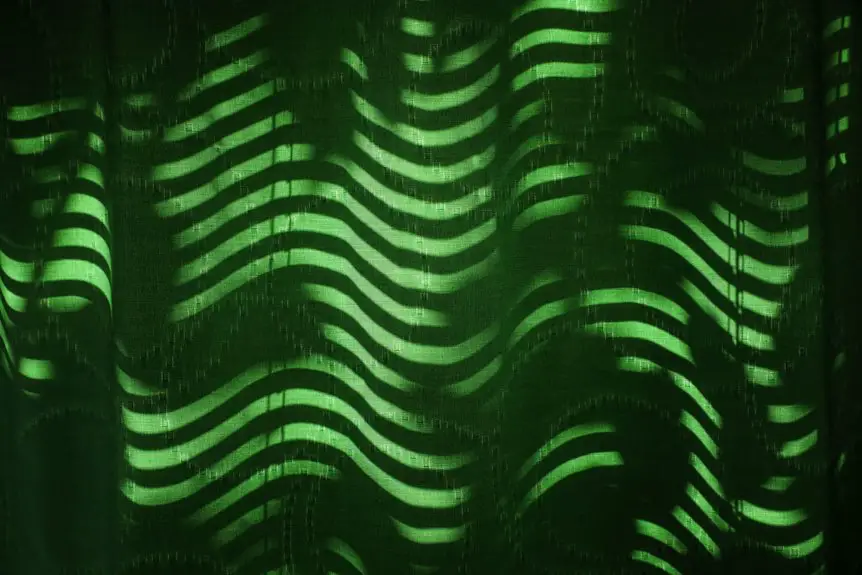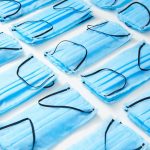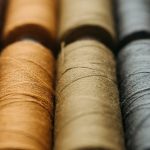Non woven polypropylene fabric is a strong, durable material made by bonding fibers without weaving, making it lightweight and flexible. You’ll find it in medical masks, reusable bags, and protective gear because it resists tearing, chemicals, and water. It’s breathable and cost-effective to produce, with types like spunbond and meltblown serving different uses. This fabric’s versatility spans healthcare to automotive industries, and if you explore further, you’ll discover its growing role in sustainability and future tech.
Table of Contents
Key Takeaways
- Non woven polypropylene fabric is made by bonding fibers without weaving, using processes like spunbonding and meltblown for specialized properties.
- It offers high tensile strength, abrasion resistance, chemical resistance, and maintains shape without stretching.
- Types include spunbond (durable bags, masks), meltblown (filtration), and spunlace (soft wipes), each suited for specific uses.
- Applications span medical protective gear, filters, automotive interiors, construction, agriculture, and consumer goods.
- Advantages over woven fabrics include lightweight, breathability, water and chemical resistance, cost-effective production, and strong durability.
Definition and Manufacturing Process of Non Woven Polypropylene Fabric
Non woven polypropylene fabric is a versatile material made by bonding polypropylene fibers together without weaving or knitting. When you work with this fabric, you’ll notice it’s created through processes like spunbonding, where molten polypropylene is extruded into fine filaments, then laid into a web.
Non woven polypropylene fabric forms by bonding fibers without weaving, using processes like spunbonding to create strong, versatile webs.
This web gets bonded using heat, pressure, or adhesives, forming a strong, unified fabric. Another method you might encounter is meltblown, which produces even finer fibers for specialized uses.
These manufacturing techniques let you get fabrics with consistent strength and durability, tailored to your needs. Since it skips traditional weaving, it’s faster and more cost-effective to produce.
You’ll find it adaptable for many purposes because the process allows control over thickness, texture, and strength without complex machinery or time-consuming steps.
Physical and Chemical Properties
You’ll find that non woven polypropylene fabric offers impressive durability and strength, making it reliable for many uses.
It also resists a wide range of chemicals, which helps it maintain performance in tough environments.
Let’s explore how these properties benefit your applications.
Durability and Strength
Although polypropylene fabric might seem lightweight, it offers impressive durability and strength that you can rely on.
This non woven material stands up well to daily wear and tear, making it ideal for various practical uses. You’ll appreciate how it maintains its integrity even under stress.
Here are four key durability and strength features you should know:
- High tensile strength prevents easy tearing or ripping.
- Excellent abrasion resistance guarantees long-lasting performance.
- Maintains shape and structure without stretching out.
- Lightweight nature doesn’t compromise its robust build.
Chemical Resistance Traits
Because polypropylene fabric resists many chemicals, it’s a smart choice for environments where exposure to solvents, acids, or bases is common. You’ll find it doesn’t easily degrade when in contact with many harsh substances, making it ideal for protective gear, medical applications, and industrial filters. However, strong oxidizing agents can affect its structure, so you should consider specific chemical compatibility.
| Chemical Type | Resistance Level | Common Use Cases |
|---|---|---|
| Acids | High | Medical masks, packaging |
| Bases | High | Industrial filters |
| Solvents | Moderate | Protective clothing |
| Oxidizing agents | Low | Limited use |
This chemical resistance helps you guarantee longevity and safety in demanding settings.
Types of Non Woven Polypropylene Fabrics
When exploring non woven polypropylene fabrics, you’ll find several types designed to meet different needs. Each type offers unique properties, making it ideal for specific applications.
Here are four common types you should know:
- Spunbond: Made by bonding continuous polypropylene filaments, it’s strong and durable, perfect for reusable bags and medical masks.
- Meltblown: Produced by blowing molten polymer through fine nozzles, it has excellent filtration properties, widely used in face masks and air filters.
- Spunlace (Hydroentangled): Created by entangling fibers with high-pressure water jets, it’s soft and absorbent, ideal for wipes and hygiene products.
- Composite fabrics: These combine two or more non woven layers, enhancing strength and functionality for industrial and medical uses.
Understanding these types helps you choose the right fabric for your project.
Advantages Over Traditional Woven Fabrics
How does non woven polypropylene fabric outperform traditional woven fabrics? For starters, it’s much lighter and more flexible, letting you use it in applications where weight and pliability matter.
You’ll appreciate its excellent breathability, which traditional woven fabrics often lack, making it ideal for medical masks and hygiene products.
Plus, non woven polypropylene resists water and chemicals better, so it holds up in harsher environments.
Unlike woven fabrics, it’s manufactured faster and more cost-effectively, which means you get reliable quality without breaking the bank.
You’ll also find it’s superbly durable despite its lightweight nature, with strong resistance to tearing.
Environmental Impact and Sustainability
Beyond its impressive performance and cost benefits, non woven polypropylene fabric also raises important questions about its environmental impact and sustainability. You should consider how this material fits into eco-friendly practices.
While it’s lightweight and durable, polypropylene is a plastic derived from fossil fuels, which means its production contributes to carbon emissions. However, it’s recyclable, which can reduce waste if managed properly.
To help you evaluate its sustainability, keep these points in mind:
- Production relies on non-renewable resources, impacting carbon footprint.
- The fabric’s recyclability depends on local facilities and consumer participation.
- It’s often reused in applications like reusable bags, extending its life cycle.
- Disposal without recycling can lead to long-lasting plastic pollution.
Balancing these factors will help you make informed choices about using this fabric.
Common Industrial Applications
You’ll find non woven polypropylene fabric widely used in the medical field for masks and gowns, offering reliable protection.
It’s also a go-to material in packaging, thanks to its durability and lightweight nature.
Plus, in agriculture, it helps with crop protection and soil stabilization.
Medical Industry Uses
Although non woven polypropylene fabric might seem simple, it plays an essential role in the medical industry. You rely on its strength, breathability, and resistance to fluids to keep patients and healthcare workers safe. This fabric is often used where hygiene and protection are critical.
Here are four key medical uses:
- Surgical gowns and drapes that provide a sterile barrier during operations.
- Face masks that filter out bacteria and viruses while allowing comfortable breathing.
- Disposable caps and shoe covers to maintain cleanliness in sensitive areas.
- Medical packaging wraps that protect instruments from contamination before use.
You’ll find non woven polypropylene fabric is indispensable in maintaining sterile environments and ensuring patient safety.
Packaging and Agriculture
Non woven polypropylene fabric serves many essential roles in packaging and agriculture, thanks to its durability and versatility.
When you use it for packaging, you’ll appreciate how it protects products from moisture and damage while being lightweight and cost-effective. It’s perfect for reusable shopping bags, protective covers, and shipping sacks.
In agriculture, this fabric acts as an excellent crop cover, shielding plants from pests, frost, and excessive sunlight without blocking airflow. You can also use it for weed control mats, which help reduce the need for herbicides and conserve soil moisture.
Its resistance to UV rays and chemicals means it stands up well in outdoor conditions, making your farming and packaging tasks more efficient and sustainable.
Medical and Healthcare Uses
When you consider the critical demands of medical environments, polypropylene fabric stands out for its strength, breathability, and resistance to fluids.
You’ll find it widely used because it helps maintain hygiene and safety in healthcare settings. This fabric supports infection control while ensuring comfort for both patients and staff.
Here are key medical and healthcare uses of non woven polypropylene fabric:
- Surgical gowns and drapes that provide barrier protection.
- Face masks and respirators to filter particles and fluids.
- Disposable bedding and covers that reduce contamination risks.
- Medical packaging for sterile instruments and supplies.
Future Trends and Innovations
As the demand for sustainable and high-performance materials grows, you’ll see non woven polypropylene fabric evolving with new technologies and applications.
Manufacturers are developing biodegradable and recycled variants to reduce environmental impact. Innovations in fabric strength and breathability are expanding its use in protective clothing, filtration, and agriculture.
You’ll also notice smart fabrics integrating sensors for healthcare monitoring and wearable tech. Advances in production methods are making the fabric more customizable, allowing you to tailor properties for specific needs.
Additionally, non woven polypropylene is gaining traction in automotive interiors and construction due to its durability and lightweight nature.
Frequently Asked Questions
How Do You Recycle Non Woven Polypropylene Fabric at Home?
You can’t recycle non woven polypropylene fabric easily at home since it requires industrial processes. Instead, try reusing it for crafts or storage bags to extend its life and reduce waste before considering professional recycling options.
Can Non Woven Polypropylene Fabric Be Used for Fashion Clothing?
You might be surprised, but you can use non woven polypropylene fabric for fashion clothing! It’s lightweight and durable, so you’ll find it great for eco-friendly bags, accessories, and even some casual wear designs.
What Is the Cost Comparison Between Non Woven and Woven Fabrics?
You’ll find non woven fabrics generally cost less than woven ones because they’re quicker to produce and use fewer resources. However, woven fabrics often offer better durability, so your choice depends on your project’s needs and budget.
How Long Does Non Woven Polypropylene Fabric Take to Biodegrade?
You should know non woven polypropylene fabric takes decades, often 20-30 years, to biodegrade because it’s a synthetic plastic. So, don’t expect it to break down quickly in natural environments or compost settings.
Are There Any Safety Concerns When Using Non Woven Polypropylene Fabric?
Did you know over 90% of non-woven polypropylene fabrics are safe for daily use? You shouldn’t worry much, but avoid burning it, as it releases harmful fumes. Always handle it with proper ventilation.
- Tetron Fabric for Marine Applications: Durability and Use Cases - June 18, 2025
- Tetron Fabric for Outdoor Furniture: Weather Resistance and Care - June 18, 2025
- Tetron Fabric for Wall Coverings: Style and Application Tips - June 18, 2025







